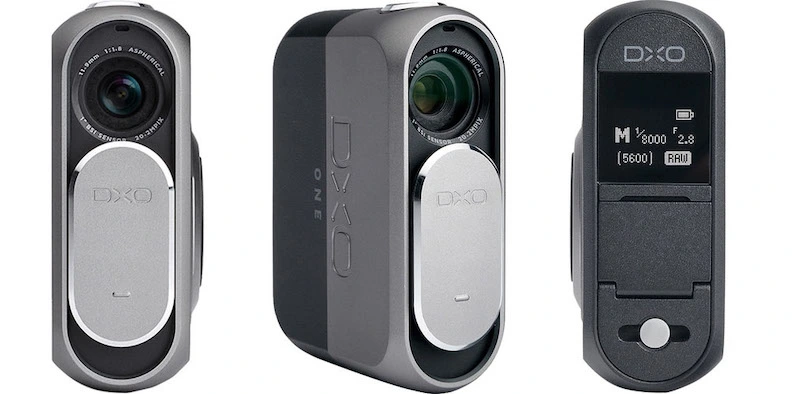DxO hardly requires any introduction: the company has already proven itself in the field of photography and photo editing. The French company sells Photo Lab, View Point and Film Pack image processing software.
DxO is known to be a company ahead of the photographic industry: its history is marked by the introduction of numerous technological innovations. Without discussing everything there is to know about the history of DxO, we will discover the company through its evolution and the different products it has offered, today and throughout its development.
Table of contents
The founding of DxO
DxO, also known as DxO Labs, is a French company based in the Paris region specializing in photography that was founded by engineer Jérôme Ménière, himself the founder of Vision IQ. In the early 2000s, he decided to bring to the photography sector the technologies he had developed for video with his first company, technologies that allow the detection of drownings in swimming pools. In 2003, he launched his first still image processing software, DxO Pro. This first version was intended for amateurs and professionals and offers algorithms to correct andimprove the quality of images by focusing in particular on blur, noise and contrast.
DxO: an innovative publisher

DxOMark
When it launched, DxO didn’t just go into image processing. The company also developed a tool it called DxO Analyzer, a system that measures, assesses and optimizes the image quality of digital cameras and smartphone cameras. This led to the opening of their photography equipment rating site, DxOMark.com, for cameras and lenses. Cameras can be compared against each other in terms of their performance and the user experience they provide. In 2017, DxOMark became a full-fledged company and continued to grow.
DxO Optics Pro
DxO Labs made history in 2004 with the launch of Optics Pro. It was innovative and offered something that had never been done before. Indeed, the image processing software introduces optical defect correction modules for each camera/lens combination. DxO Optics Pro is now known as DxO PhotoLab: the company renamed the software following its acquisition of Nik Collection in 2017 and the integration of U Point technology. PhotoLab is DxO’s main software.
DxO FilmPack
DxO FilmPack has also been a great success for the company. This software, launched in 2006, makes it possible to realistically reproduce the colors and grains of film photos. It is considered the first simulation software for "high fidelity" film. DxO has worked alongside large laboratories to produce a product that is second to none. Each film was analyzed to extract the color curves used to create the filters.
DxO ViewPoint
With ViewPoint, DxO introduced a solution to correct image geometry. With this tool, photographers can review the perspectives of their images, sometimes distorted according to their placement at the time of shooting. ViewPoint can be used as stand-alone software, as a plug-in and can even be used with Adobe Lightroom and Adobe Photoshop.
PRIME and DeepPrime
In 2013, the company introduced revolutionary technology with DxO Optics Pro 9. Indeed, it developed the first algorithm for the reduction of digital noise, called PRIME. In 2020, it took artificial noise reduction intelligence even further and launched DeepPrime. This is the most advanced noise reduction technology on the market today, making DxO one of the leaders in the photography market.
DxO One: when the publisher becomes a manufacturer
In 2015, the publisher became a manufacturer with the launch of its first smartphone camera, the DxO One. It can be said that this is not a camera like the others: the DxO One is a module that can be integrated into a smartphone (iOS) and comes in the form of a small box that integrates a sensor. Simply put, it can be described as an external camera for iPhones. This very compact camera consists of:
- a 20 megapixel Sony sensor;
- a fixed lens with an aperture of 32 mm;
- 1080p video quality;
- a small monochrome OLED display for framing and focusing;
- its own storage space
- remote control of the device via Wi-Fi allowing instant sharing on social networks.
All these features make the DxO One an innovative wide-angle camera with an advantageous design: it is small and lightweight.

DxO and the acquisition of Nik Collection
In 2017, DxO evolved significantly, for several reasons. In addition to separating DxO Labs and DxOMark into two separate entities, DxO acquired Nik Collection from Google, a software suite known worldwide for the quality of its rendering and its photo editing technology. It offered a set of image enhancement tools and filter plug-ins for Adobe products such as Photoshop, Lightroom and Aperture. This acquisition had a significant impact on the evolution and development of the company’s solutions. The Nik Collection software suite consists of:
- Analog Efex Pro, to create images with a silver effect;
- Color Efex Pro, which offers a range of creative filters;
- Dfine, a noise reduction tool using advanced algorithms;
- HDR Efex Pro, for merging multiple shots to create the perfect image;
- Sharpener Pro, to improve the sharpness of photos down to the smallest details;
- Silver Efex Pro, a plug-in for working with black and white photos;
- Viveza, to make color changes to specific areas of an image.
Indeed, following this purchase, DxO was able to integrate the U Point technology for which Nik Software is so well known. It is a tool for performing localized edits. In particular, this allowed DxO to win against competitors. DxO Optics Pro became DxO PhotoLab.
DxO's offerings today
Although certain products are no longer present in DxO’s offering, as is the case with the DxO One camera, the company continues to improve most of its software. The following are available:
- PhotoLab, the main software of DxO;
- FilmPack, the software for obtaining silver effects;
- ViewPoint, the tool for correcting the geometry of images;
- PureRaw, a raw image quality enhancement software, compatible with more than 400 devices, including Canon, Sony, Nikon and other devices;
- Nik Collection, a suite of eight Adobe Lightroom and Adobe Photoshop compatible software programs.
This list constitutes DxO’s independent software. Within this group, many advanced technologies are constantly being updated, such as:
- ClearView;
- DeepPrime XD;
- U Point.
DxO works alongside the best laboratories around the world to remain the best solution on the market.










